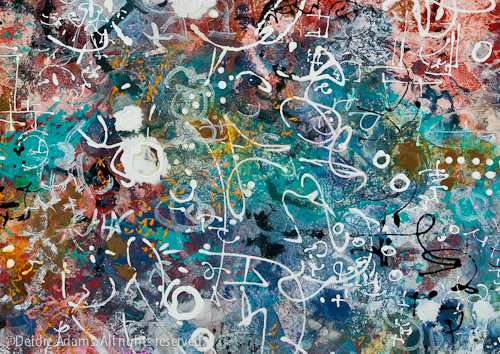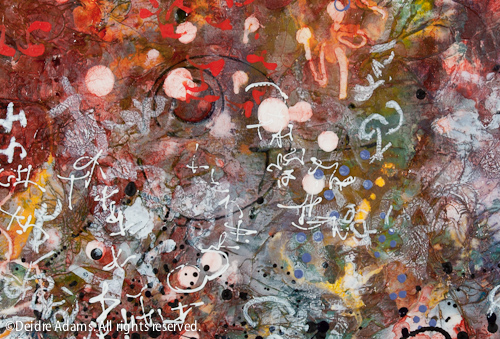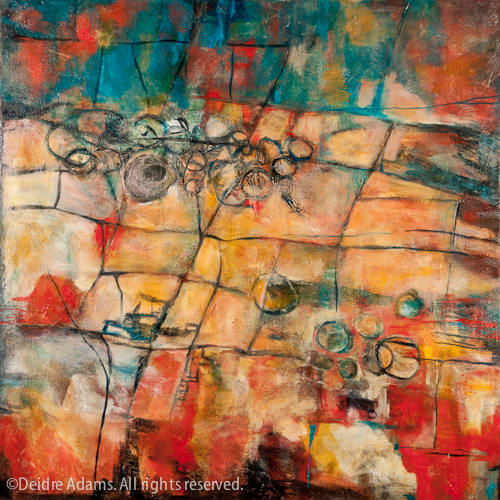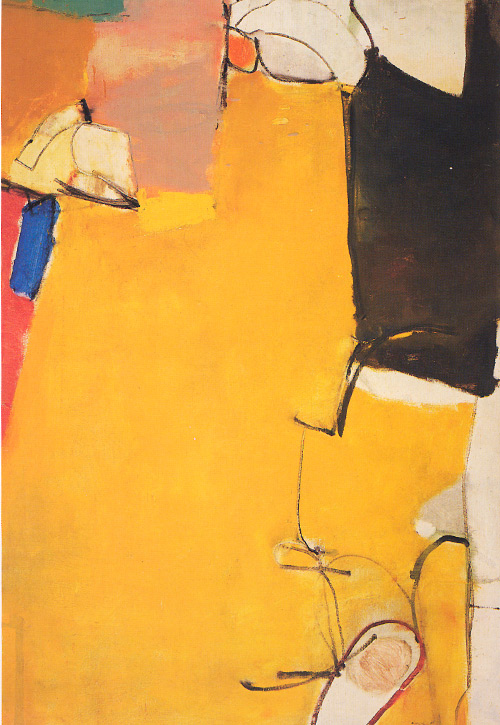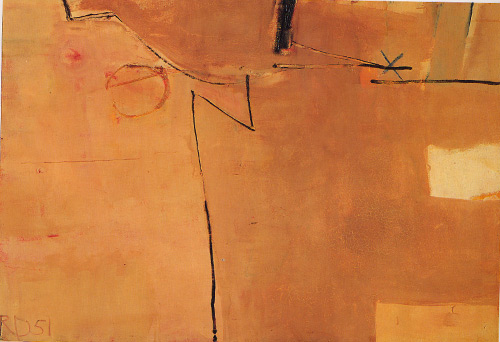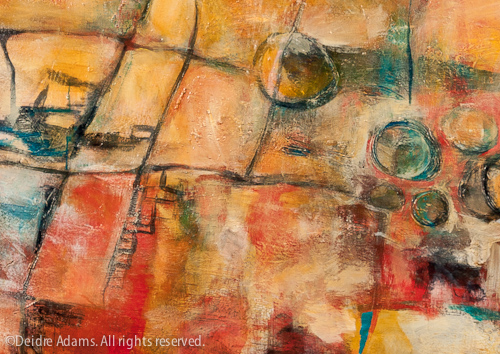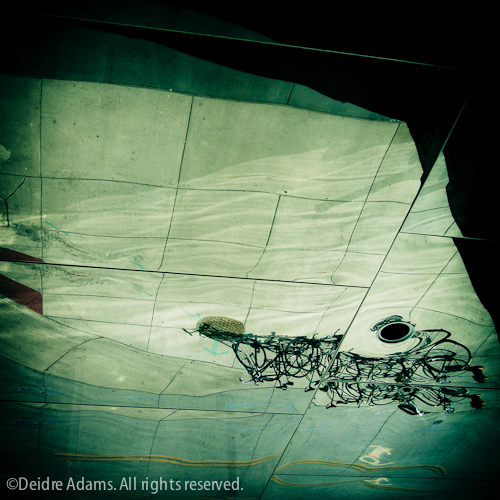More thoughts on “meaning”
Orthographic Rule, 24 x 36 inches, acrylic on canvas, ©2010 Deidre Adams
While considering the comments regarding my last post on the topic of meaning, it dawned on me that I never did post my final thesis statement written for my BFA exhibition, although I did go on about it at length. While my focus has become somewhat more broad in the latest work, much of what I said is still applicable, so it’s a good follow-up to my last post.
Deidre Adams
Plane of Persistence
BFA Thesis Statement
Minutes, days, months, years — the perpetual cycle of time and the seasons both creates and destroys; it both hides and reveals. As man seeks to build, nature seeks to reclaim. Plane of Persistence captures the essence of the seductive surfaces created by this unpredictable, uncontrollable process. Abstract in form, each of my paintings is a personal meditation using the formal elements of visual language, specifically line, shape, color, scale, and balance. Texture is a primary focus, and I add marks and washes of color in layers, building a literal record of all the stages in the process. Language is evident but reduced to its essence, communicating only the need for obsessive mark-making. The visual nature of the work, displaying aesthetics of decay and decomposition, is my intuitive response to a society becoming ever more preoccupied with the manufactured and the mass-produced, the over-loaded and over-consumed.
Plane of Persistence makes reference to time and transformation, specifically to the ways in which surfaces are altered by external forces. Oxidation, cracks, watermarks, scratches and scrawls made by the human hand — these are the vestiges of change that inspire my process. My method of layering and my system of mark-making emulate the process of natural transformation. Organic in personality, my vocabulary of marks consists of dots, dashes, lines, or circles, or may sometimes appear to be a secret language that’s familiar, yet remains unintelligible. I work in an intuitive process of personal discovery, first placing objects and shapes on the surface, then using these as a catalyst for response. Elements are added in layers as I continuously adjust the composition to balance harmony and chaos. Mindful of the picture plane, I work to maintain tension between flatness and depth. Textural elements added to the surface intensify this spatial ambiguity while serving as focal points within the composition.
I find inspiration in Eastern philosophy and the accompanying approaches to art-making, specifically Zen ideas of the “empty” or “open” mind, of mindful awareness, which emphasize trusting in the process while leaving one open to new creative possibilities. Also important is the Japanese concept of wabi-sabi, which stresses the value of finding beauty in the imperfect and the impermanent, while accepting the natural cycle of life, decay, and death.
Plane of Persistence pays homage to forces greater than myself, while the working process allows me to find a quiet place within. Even as the decisions I make while painting are an attempt to control the result, there is still an element of chance that makes the outcome unpredictable, much like life itself. Despite all our efforts to conquer nature and the elements, we are still subject to forces we cannot control.


